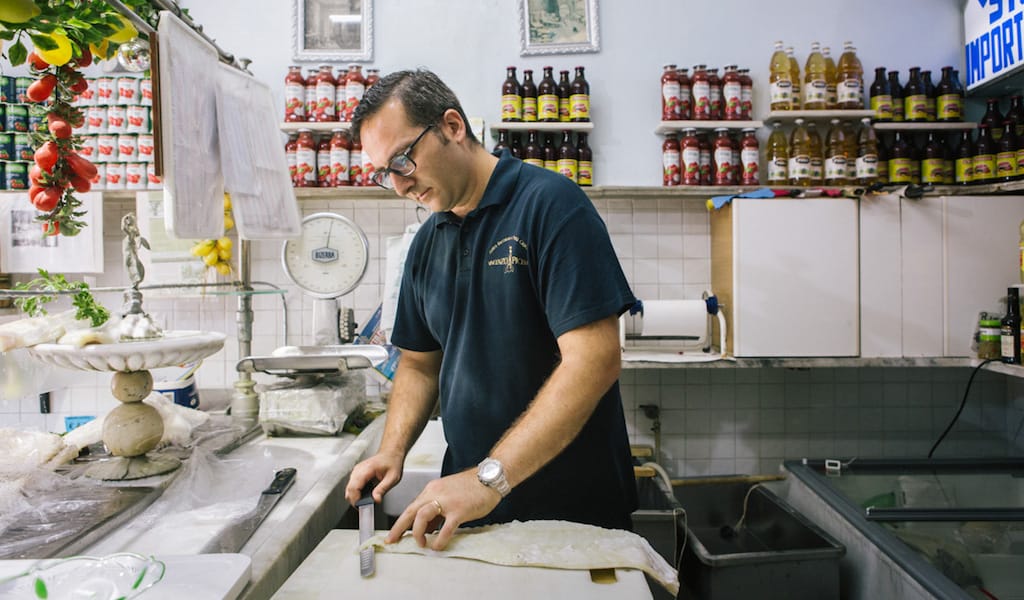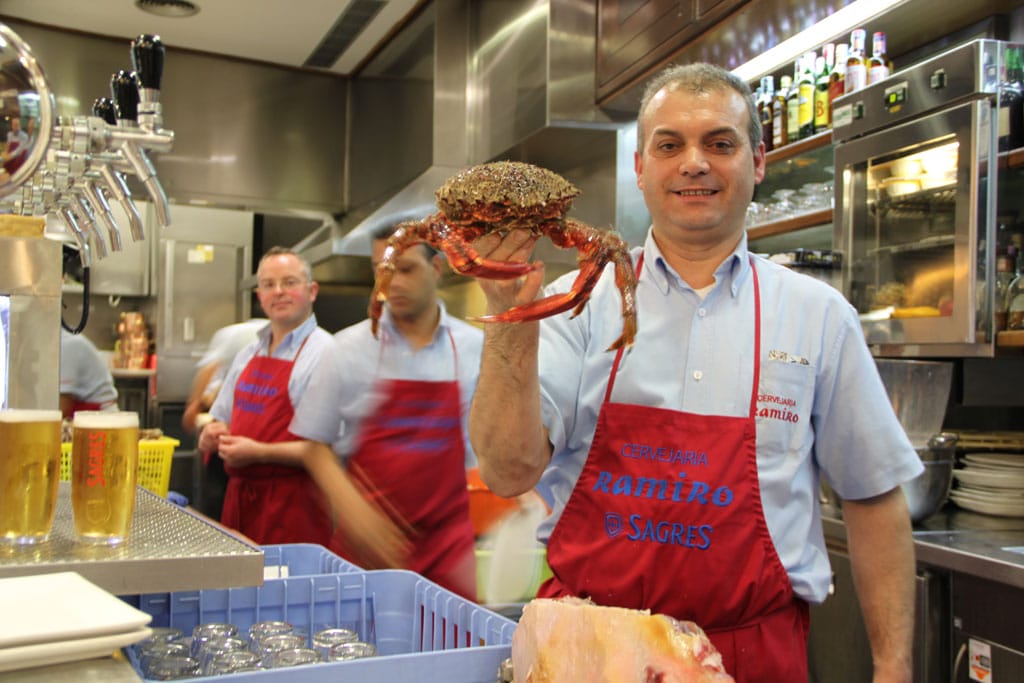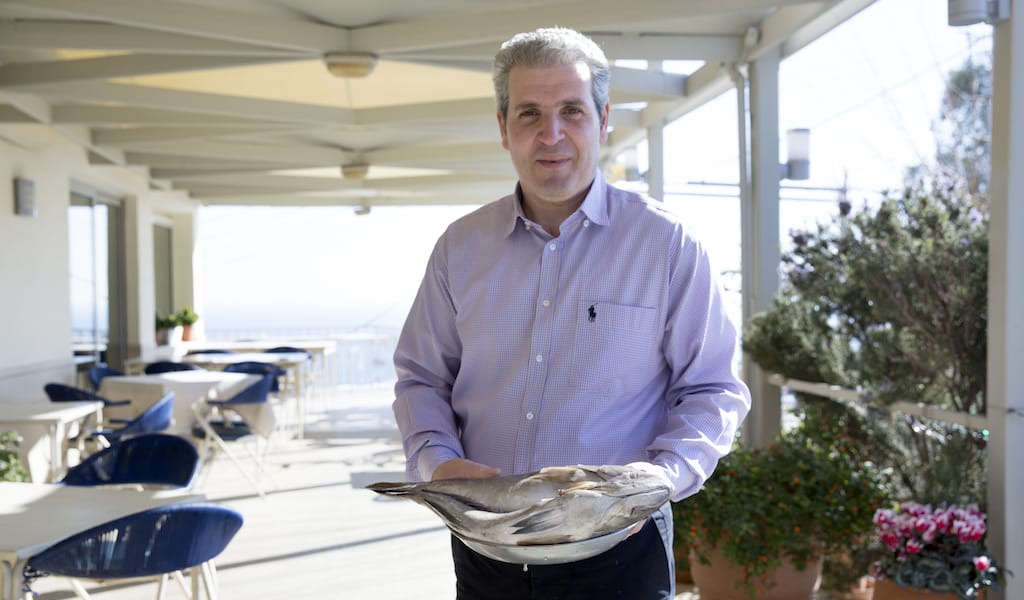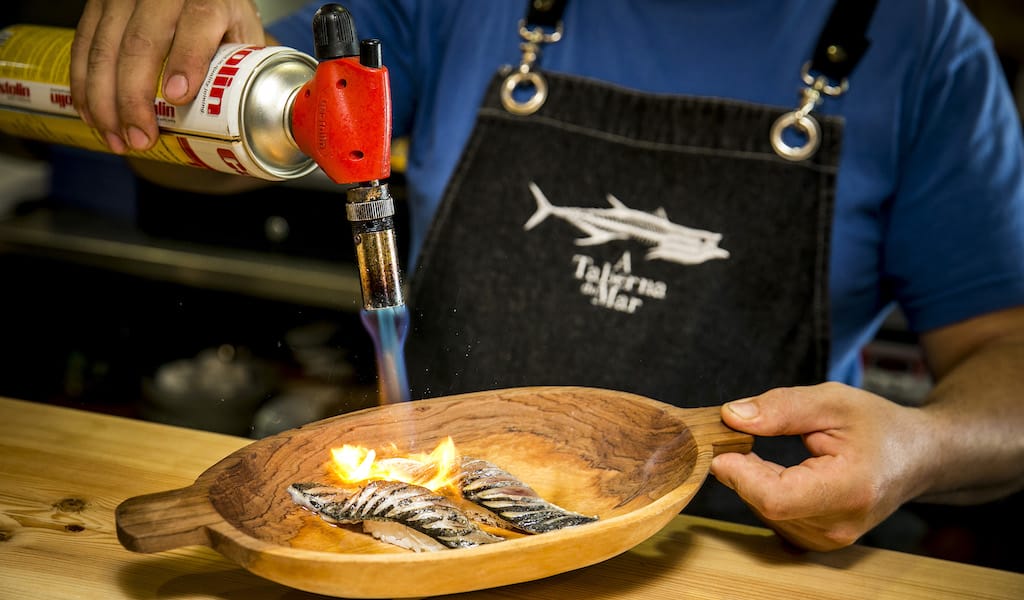“Mamma mia!” exclaims our Californian friend, as he tastes a slice of cod carpaccio for the first time. Better yet, let’s call this dish, made by one of the oldest fish shops in Naples, Norwegian stockfish sashimi.
We are in Porta Capuana, and Vincenzo Apicella is carefully slicing dried fish (stockfish is an unsalted fish preserved only by cold air and wind) that has been rehydrated. He seasons the very thin fillets simply, with the juice of a fragrant Sorrento lemon, and serves them together with Sicilian green olives. The dish is proof, if it was needed, that good food tastes best when it is prepared as simply as possible.
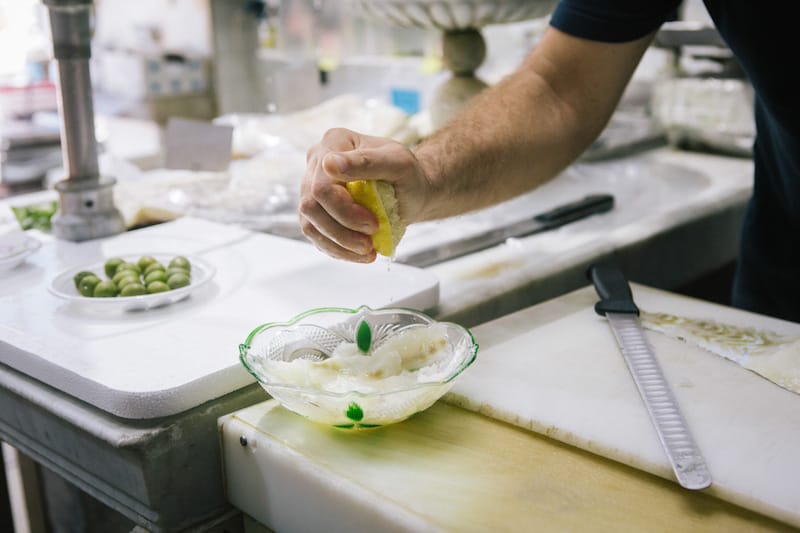
Stockfish is a very popular product in the Neapolitan cuisine, a result of the religious traditions of the Kingdom of Naples (1282-1816). It all began a little under 500 years ago with the Council of Trent, which reformed and revitalized the Catholic Church.
The council called for stricter enforcement of the church’s prohibition of meat consumption on certain days. It was around this time that monks began to eat more fish, especially the dried fish that the Norwegians exported throughout Europe. It’s believed that the laypeople soon followed in the clergy’s example, adopting this new food. Since then, stockfish has been a constant presence in Neapolitan markets.
Many people, however, confuse stockfish and baccalà (salt cod). The main difference between the two lies in the preservation method: if cod is preserved in salt, we call it baccalà; if instead it is dried, we call it stockfish (the word stockfish derives from the Norwegian work stokkfisk, which literally means “stick fish”). The latter is placed on outdoor wooden racks, where it’s completely dehydrated by the sun and the ocean wind.
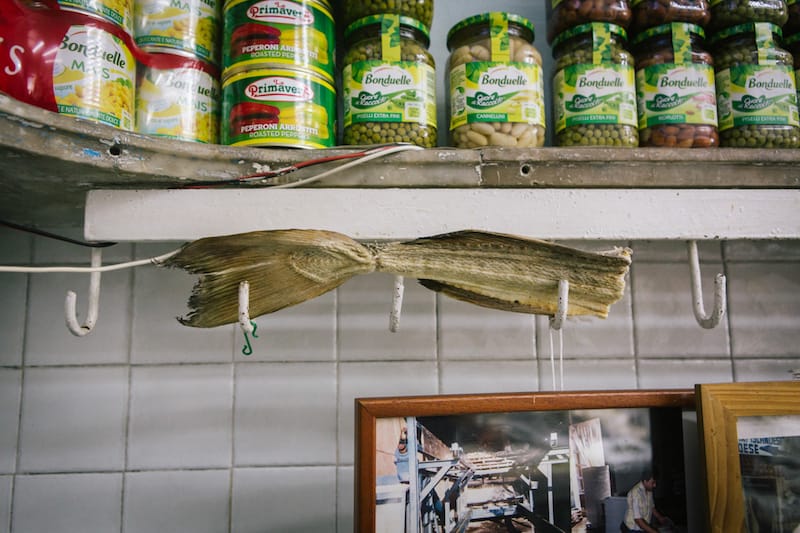
Rock hard, the “stick fish” arrives in Antica Baccaleria Porta Capuana, where Vincenzo soaks it for at least five days to bring it back to its original consistency.
It’s a very popular dish with Neapolitans of a certain age. “We prepare it at least twice a week, in white with oil and tomatoes,” says Maria, a cheerful Neapolitan customer.
“I really like it cooked on a bed of chickpeas,” chimes in Antonio, another regular customer.
“We hope it will bring in young people who are crazy about sushi.”
But the younger generations are less likely to buy cod – they consider it a fish for grandmothers. Vincenzo has long been scheming about how to market stockfish to this demographic. When starting up our culinary walk in Naples, we proposed serving the stockfish raw, like Peruvian ceviche or a Japanese sashimi. And by pure chance was born a new product that we call the sashimi di stockfish, a sort of fusion between two very distant cultures.
“This is a new way of using a traditional product,” explains Vincenzo, “and we hope it will bring in young people who are crazy about sushi.”
The store opened in 1940, Vincenzo tells us. “I’m the fourth generation in my family to sell stockfish and baccalà.”
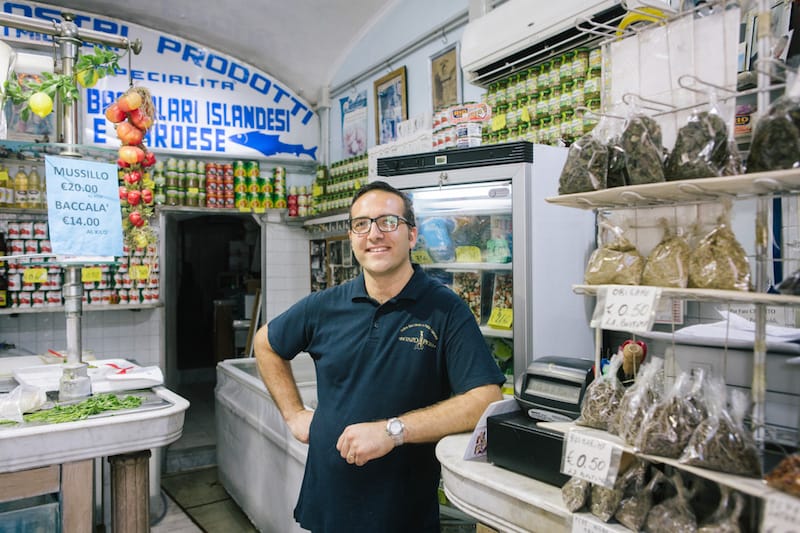
But at Vincenzo’s shop you can also find the best Sicilian olives and capers. There are also always bottles of colatura di alici, a fish sauce made from anchovies. The direct heir of garum, the fermented fish sauce popular in ancient Rome, and made in the seaside town of Cetara, this pungent sauce makes a quick meal when added to spaghetti.
The shop itself is a gem. There’s the marble counter that has been here for over a hundred years, and the shop’s signs are beautiful examples of 1950s typography. But the heart of Antica Baccaleria Porta Capuana is Vincenzo, who is always greeting customers with a big smile on his face. While his products are excellent, it’s that welcoming smile and warm personality that keeps us coming back.
To taste Vincenzo’s stockfish sashimi, join our Naples culinary walk.
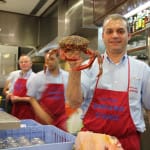 July 8, 2021 Cervejaria Ramiro
July 8, 2021 Cervejaria Ramiro
Cervejaria Ramiro is the undisputed temple of seafood in central Lisbon. The […] Posted in Lisbon February 25, 2019 Panorama
February 25, 2019 Panorama
Piraeus has long been a city on the go: ever since antiquity, it has served as the main […] Posted in Athens October 3, 2018 A Taberna do Mar
October 3, 2018 A Taberna do Mar
The innovative chef Filipe Rodrigues, known for marrying Asian inspiration with […] Posted in Lisbon
Published on May 25, 2018
Related stories
July 8, 2021
LisbonCervejaria Ramiro is the undisputed temple of seafood in central Lisbon. The more-than-50-year-old business represents an old-school type of eatery: a beer hall where the seafood is fresh and cheap, with a choice from the daily menu or directly from the large aquariums that look out to the street. Taking up two floors of a…
February 25, 2019
AthensPiraeus has long been a city on the go: ever since antiquity, it has served as the main port of Athens. During the late 19th and early 20th centuries, the city was an important industrial center as well, and today it remains one of the most significant ports in the Mediterranean, connecting Europe with commercial…
October 3, 2018
LisbonThe innovative chef Filipe Rodrigues, known for marrying Asian inspiration with Portuguese flavors, has finally opened his long-awaited restaurant, A Taberna do Mar (Sea Tavern), on a corner in the Graça neighborhood. Considering that 41-year-old Rodrigues has already ascended to a position of prominence thanks to his sardine nigiri, still one of the most iconic…







































